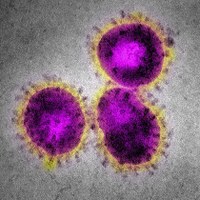CORONAVIRUS - focus
Coronavirus - what they are
Coronaviruses are a large family of positive-stranded RNA viruses, with a corona-like appearance under an electron microscope, known to cause diseases ranging from the common cold to more serious diseases such as Middle Eastern Respiratory Syndrome (MERS) and Severe Acute Respiratory Syndrome (SARS).
When they were discovered
Coronaviruses were identified in the mid-1960s and are known to infect humans and certain animals (including birds and mammals). The primary target cells are the epithelial cells of the respiratory and gastrointestinal tract.
To date, seven Coronaviruses have proven to be able to infect humans:
• Common human coronaviruses: HCoV-OC43 and HCoV-HKU1 (Betacoronavirus) and HCoV-229E and HCoV-NL63 (Alphacoronavirus); they can cause common colds but also serious lower respiratory tract infections
• other human Coronaviruses (Betacoronavirus): SARS-CoV, MERS-CoV and 2019-nCoV (now called SARS-CoV-2).
New Coronavirus
A new Coronavirus (nCoV) is a new strain of coronavirus that has never been identified in humans previously.
In particular, the one called SARS-CoV-2 (previously 2019-nCoV), has been identified as the causative agent of a very aggressive viral pneumonia called COVID-19.
The virus causing the current coronavirus pandemic has been called SARS-CoV-2 "Acute severe respiratory syndrome coronavirus 2". SARS-CoV-2 belongs to the β-coronavirus genus and is similar to that of SARS in 2003 and MERS in 2012.
The Coronavirus genome encodes 4 structural proteins that include the Spike protein (S), the envelope proteins or Envelope (E), the Membrane protein (M) and the Nucleocapside (N).
The human immune system produces specific antibodies from the first days of the first infection with the new coronavirus 2019.
Source Ministry of Health

